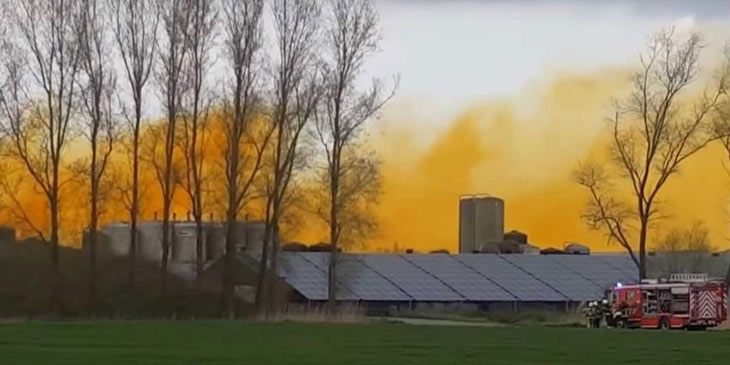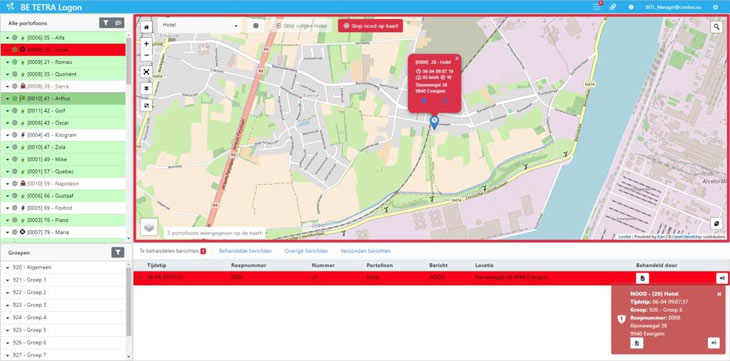

At that moment it is necessary to determine the direction in which the cloud is moving and to be able to estimate the harmfulness to humans. In the event of disasters and incidents, the local disaster broadcaster calls for windows and doors to be closed. Switching off the ventilation system is often forgotten, and is just as necessary. There is now a solution for this: the BOA-V, Remote Control for Ventilation.
Look at the risk map of the Netherlands and you will see that the risk is by far the greatest in the Rotterdam-Rijnmond region. But elsewhere too, ships and trains with hazardous substances travel through densely populated areas, and there are danger zones near or even in residential areas everywhere in the Netherlands.

This means that the system draws in outside air. If there is a toxic cloud outside, it is dangerous. It is therefore important to be able to stop the central mechanical ventilation in buildings. However, many installations can only be switched on or off in the buildings themselves, and only by a designated key holder. If it is even thought of, in the event of a gas cloud, the key holder will not go out on the street to switch off the ventilation system, or too late. And the first quarter of an hour is crucial with poisonous clouds.
In collaboration with the fire brigade (Safety Region) of Rotterdam-Rijnmond, a system was therefore developed that can switch off the ventilation remotely from the control room with a simple push of a button. This system is called Remote Control – Ventilation (BOA-V).
“Unfortunately, security awareness only arises when people feel the threat,” said Peter Uithol, senior policy officer for risk and crisis management of the Rotterdam-Rijnmond Security Region, involved as project leader in the development of BOA-V. “Due to the high speed of movement of a poison or gas cloud, evacuation is usually not the best option, but it is all the more important to be able to close the ventilation quickly.”
The system is integrated in the control room work screens. The moment an incident is reported, the operator marks a risk area on the GIS map. The software then asks “Do you want to switch off the underlying ventilation systems?”. If the operator checks “Yes”, the systems will be turned off. It couldn't be simpler. It is important that this solution is in the software that the control room uses on a daily basis. If such a system is separate and is only used in the event of disasters, a dispatcher only uses it once every few years. That is asking for delays, confusion and errors – especially in stressful situations such as a poison cloud.
BOA-V also offers the owner of the ventilation systems the option to switch, via a protected (web) site. This can be relevant if, for example, there are stench complaints, which are caused, for example, by a local container fire, or the tarnishing of a roof.
The shutdown is done via the Entropia network. This network was chosen because you cannot rely on consumer and GSM networks in the event of incidents. In addition, Entropia has secure connections with various control rooms in the Netherlands. The underlying applications are hosted in two locations outside the region, and the backup is also located in a different location. This ensures that the remote circuit always works.

Entropia has been one of the leading players in mobile mission-critical and business-critical communication in the Netherlands and Belgium since 1990. Entropia owns the mobile network. This premium network is mainly used by organizations in Public Order and Security, industry and various IIOT sectors, where high demands are made on availability and reliability. In addition to data communication, Entropia also offers mission-critical and business-critical voice communication with the national TETRA network. Entropia has branches in the Netherlands (Moordrecht) and Belgium (Oostkamp, near Bruges), where a total of 30 people work.
